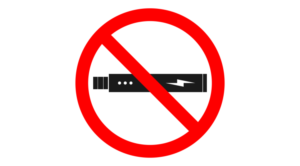The sudden emergency doctrine is a doctrine of tort law in which a person who is confronted with a sudden unexpected situation not of his or her making and acts reasonably will not be held liable even if those actions result in a collision. The sudden emergency doctrine has recently been criticized by courts in various jurisdictions, arguing that it is confusing to juries and unfairly allows them to find a defendant driver not liable for causing a collision when faced with an ordinary traffic situation for which he or she should have been prepared. For example, the Colorado Supreme Court completely abolished the sudden emergency doctrine and instruction in 2013, citing the instruction’s minimal utility and unnecessary repetition of the “reasonable care under the circumstances” standard articulated by other pattern negligence instructions. Bedor v. Johnson, 292 P.3d 924, 929 (Colo. 2013).
As a general rule, all motor vehicle operators are required to operate their vehicle utilizing ordinary care – that is, they are expected to drive at a reasonable speed and manner in order to avoid colliding with other persons and objects upon the roadway. In most cases, if a driver fails to exercise ordinary care and causes an accident, that driver is at fault for the accident and is responsible for any damage caused.
However, that driver may be excused from responsibility in a collision due to the sudden emergency doctrine. In North Dakota, a jury hearing a motor vehicle accident case is allowed to consider whether either involved driver was faced with a “sudden emergency” – such as oncoming traffic on the wrong side of the road, an unexpected patch of ice, a non-negligent brake failure, a deer leaping onto the roadway, or a sudden heart attack. In some car accident cases, the jury would be instructed to consider the following:
If suddenly faced with a dangerous situation the person did not create, the person is not held to the same accuracy of judgment as one would be if there were time for deliberation. The person is not at fault if the person acted as an ordinary prudent person would act in a similar emergency.
The jury could find that the driver was not responsible for the collision, as this instruction is confusing to juries and seems to give the defendant an excuse for causing the crash. Ultimately, whether a jury is allowed to consider the sudden emergency doctrine during its assessment of fault is the trial judge’s decision.
Although the North Dakota Supreme Court has not yet abolished the sudden emergency instruction, it has recognized the criticisms of allowing the instruction in the recent case of Tidd v. Kroschus, 2015 ND 248. In the Tidd case, Tidd argued there was no sudden emergency and the district court erred in giving the jury the sudden emergency instruction. Tidd urged the North Dakota Supreme Court to abolish the instruction, however the Court instead found that specifically “every unexpected occurrence does not constitute a sudden emergency.” Id. The Court declined to address the issue of abolishing the instruction based on the nationwide criticism of the doctrine. It instead held that the accident itself could not be the emergency that triggers the instruction to the jury, but there would have to be some independent and unforeseeable event to trigger the sudden emergency instruction. Ultimately, the Tidd Court found the sudden emergency instruction was not appropriately given in the case, but declined to address the issue of eliminating the instruction.
The sudden emergency instruction unfairly implies a reduced standard of care and skews the analysis in favor of the defendant. It detracts from the jury’s responsibility to assess fault for deviations from the standard of ordinary care in a negligence case. While analyzing a person’s reaction to a sudden emergency can be important in a jury’s overall determination of fault, an instruction that focuses the jury’s attention on only one aspect of the incident rather than the totality of the circumstances is improper and unnecessary. A North Dakota jury can properly determine fault in an automobile collision case under the existing negligence instructions without the inclusion of the sudden emergency instruction. North Dakota negligence law no longer necessitates the use of the sudden emergency instruction, and it is time for North Dakota to abolish sudden emergency instruction.

Born and raised in Western North Dakota, Tatum O'Brien attended North Dakota State University and graduated with distinction from the University of North Dakota School of Law. She has since built years of litigating experience in her home state and become recognized as a highly skilled attorney representing clients in criminal and personal injury cases in addition to helping those who have experienced issues of medical malpractice, serious personal injury, and wrongful death.









Comments for this article are closed.